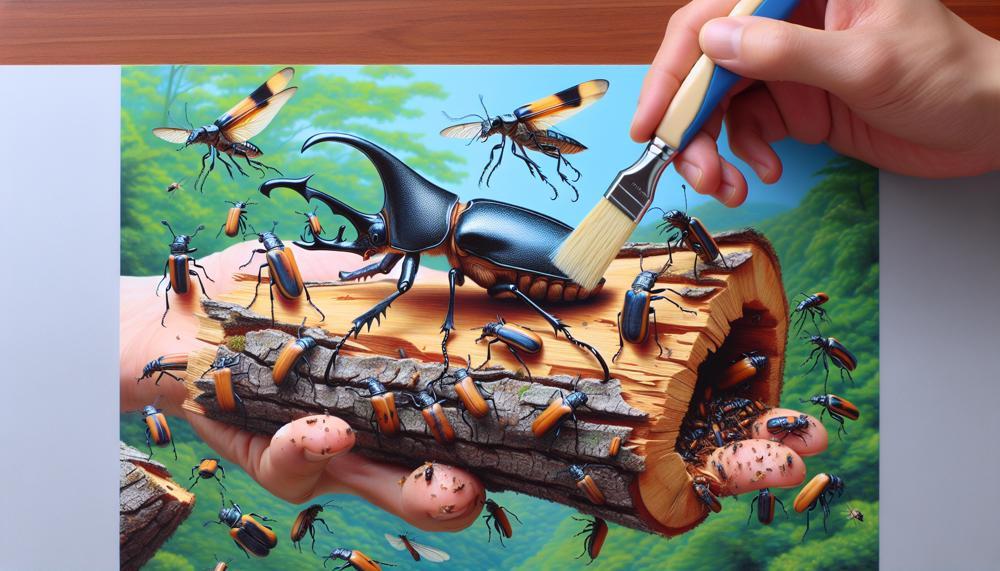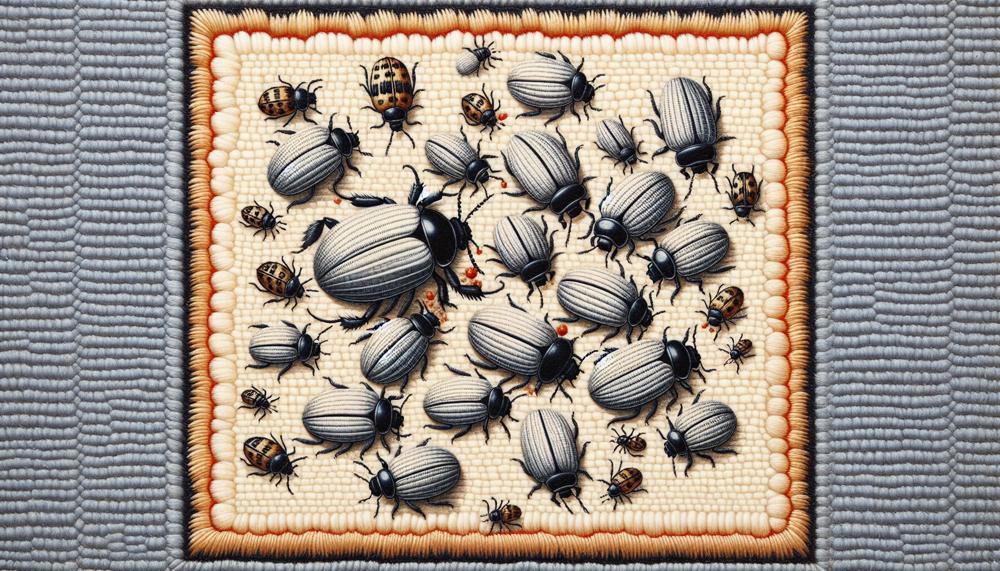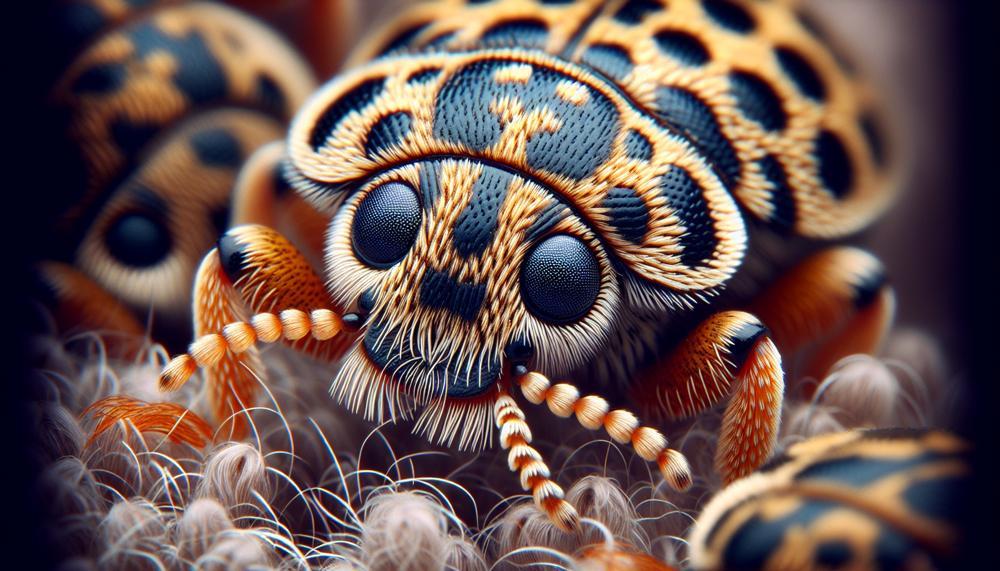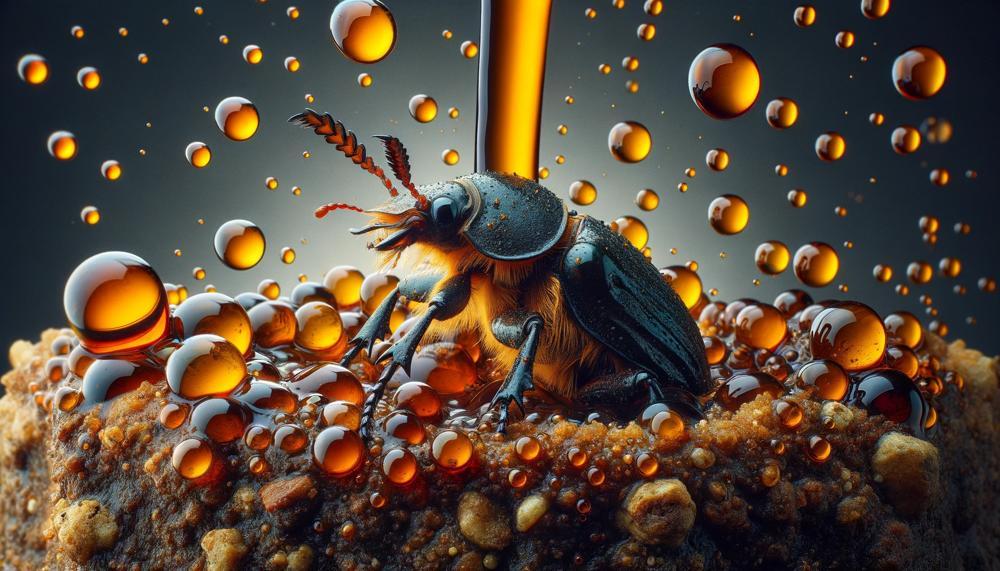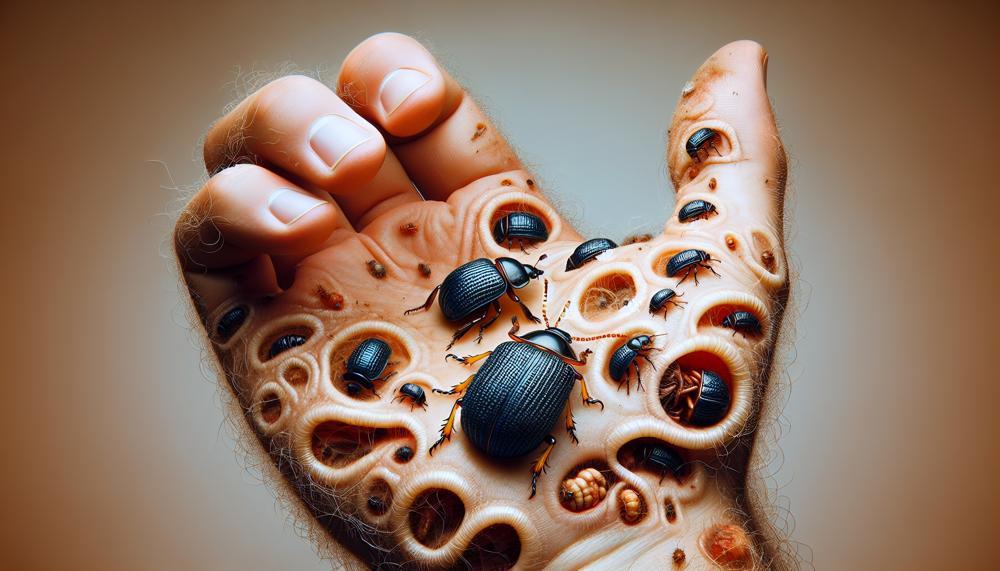These insects, known for their unique clicking mechanism used to flip themselves into the air, are more than just a curiosity. They can cause significant damage to crops, garden plants, and even infiltrate your living spaces. There are effective, environmentally friendly strategies to manage and reduce their presence without resorting to harsh chemicals.
In this article, we delve into the heart of the issue, providing you with a toolkit of natural remedies and preventative measures designed to protect your green spaces and maintain ecological balance.
So, how do you get rid of click beetles naturally?
Here are some natural ways to get rid of click beetles:
- Peppermint oil: A natural bug repellent that can control beetles
- Diatomaceous earth: A natural substance made from crushed algae that dehydrates insects
- Lavender: Repels beetles and other bugs, and can be used to treat bug bites
Get ready to empower yourself with knowledge and tactics that are as kind to the environment as they are effective against these pesky intruders.
Table of Contents
What Are Click Beetles?
Click beetles, known in the scientific community as members of the family Elateridae, are unique insects recognized for their ability to launch themselves into the air with a characteristic clicking sound. This fascinating mechanism is a defense strategy that helps them escape predators.
These beetles have elongated bodies, typically measuring between 0.2 and 1 inch in length, and are equipped with six legs and two antennae.
Why Click Beetles Need to Be Removed From Homes:
| Aspect | Issue | Consequence |
| Plant/Crop Damage | Feeding on roots, stems, leaves, fruits | Stunted growth, death of plants |
| Food Contamination | Infestation of stored products | Spoilage and contamination of food items |
| Nuisance | Buzzing/clicking sounds; attraction to lights | Irritation and disruption of outdoor activities |
Given these reasons, it’s clear that while click beetles might seem harmless at first glance due to their non-toxic nature towards humans and pets, their potential for damage and nuisance makes them unwelcome guests in homes and gardens.
Identifying the Source of Infestation
Identifying the source of a click beetle infestation involves a combination of detective work and understanding these critters’ habits.
Here’s how you can pinpoint where these uninvited guests are sneaking in:
Inspect Your Home
First things first, give your home a thorough inspection. Look for any cracks, crevices, or openings that could serve as beetle gateways. Focus on areas where you’ve spotted them or near light sources, as they’re attracted to brightness.
Understand Click Beetle Behavior
Knowing what tickles the fancy of click beetles can significantly narrow down their hideouts. They’re fans of moist places and organic materials. Dead wood, leaf piles, and mulch are like five-star hotels for them.
Track Their Movements
Observing where these beetles cluster can provide clues. Are they congregating near windows or doors? Chances are, they’re getting in from nearby. Notice them around plants or pantry areas? Your indoor greenery or food stores might be attracting them.
Use Light To Your Advantage
Since these beetles are drawn to light, using it can help pinpoint entry points. At night, turn off house lights and observe where beetles are coming from under the glow of a single source.
Vacuuming to Remove Click Beetles
To sweep click beetles out of your abode effectively, a strategy as simple as vacuuming plays a pivotal role. Given these critters’ knack for sneaking into our homes and setting up camp, particularly in the cosy confines of our carpets, a regular vacuuming routine is not just beneficial; it’s essential. To cut to the chase, vacuuming once a week stands as your best bet in keeping these intruders at bay.
Frequency of Vacuuming for Click Beetle Control
| Area of the House | Recommended Vacuuming Frequency | Additional Notes |
| High-Traffic Areas (Living room, Hallways) | Daily to Every Other Day | These zones are beetle magnets due to increased human activity. |
| Carpets and Rugs | At Least Once a Week | Focus on thoroughness; use attachments to reach corners and edges. |
| Less Frequented Areas (Guest rooms, Storage areas) | Every Two Weeks | Don’t overlook; beetles might use these spots as hideouts. |
Why stick to this routine? It’s not just about removing the beetles you can see. Vacuuming regularly disrupts their life cycle, making your home less inviting for them to lay eggs or find shelter. Plus, it’s an excellent way to get rid of any potential food sources that might attract them indoors in the first place.
And here’s a tip straight from the horse’s mouth: when you’re done vacuuming, chuck that bag or empty the canister outside immediately. You wouldn’t want those crafty beetles to make their way back in, now would you?
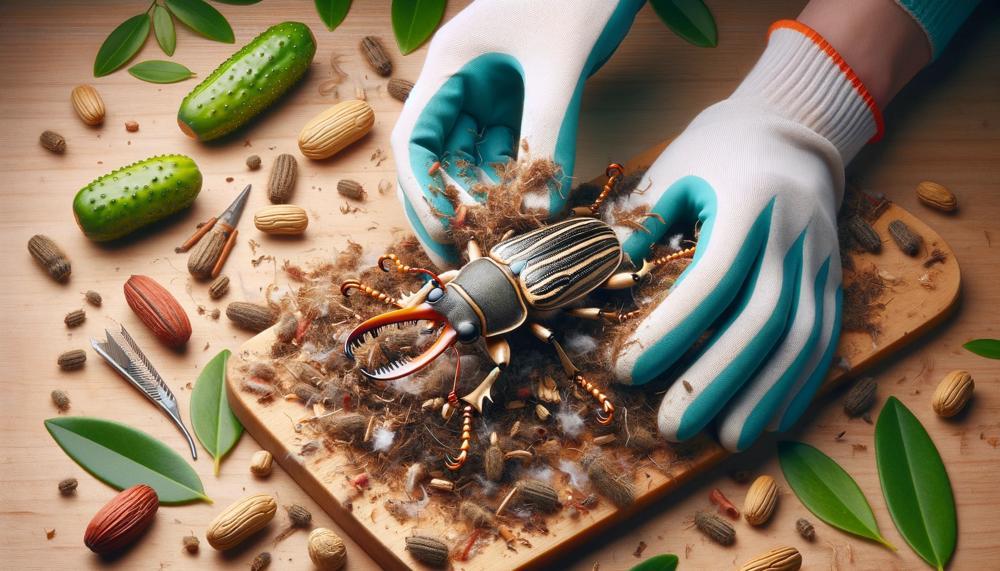
So, making vacuuming a part of your weekly cleaning ritual is a smart move. It keeps your floors spick and span while showing click beetles the door.
Using Insecticides to Get Rid of Click Beetles
To tackle the pesky problem of click beetles, a strategic approach using insecticides with specific active ingredients is essential. The most effective insecticides contain bifenthrin, cyfluthrin, or permethrin. These chemicals pack a punch against click beetles, making them the top choices for eradication efforts.
However, it’s not just about what you use; it’s also about how you use it. Here’s a detailed guide to help you in your battle against these unwelcome guests:
Effective Insecticides and Application Methods
| Insecticide | Active Ingredient | Application Tips |
| Bifenthrin-based sprays | Bifenthrin | Apply around home foundations, windows, and doors; focus on early morning or late evening when beetles are more active. |
| Cyfluthrin-containing solutions | Cyfluthrin | Treat around light sources and garden areas; ensure thorough coverage of potential entry points. |
| Permethrin sprays | Permethrin | Focus on cracks, crevices, and other hiding spots; reapply as directed on the product label. |
Safety and Efficacy
When using these insecticides, wearing protective gear is non-negotiable. Gloves, long-sleeved shirts, and trousers will keep your skin safe from unwanted chemical contact.
Always follow the product’s label instructions to the letter, not only for your safety but also to ensure maximum effectiveness against click beetles.
Timing Is Everything
The timing of your application can make a world of difference. Early mornings or late evenings are prime times for click beetle activity.
Targeting them when they’re most likely to be on the move increases your chances of hitting them hard.
Spot-On Application
Aim to thoroughly cover those areas where click beetles love to hang out. Windows, doors, and the foundations of your home are their preferred entry points. Going beyond surface treatment by tackling cracks and crevices where they might be hiding will ramp up your success rate.
Consider the Environment
While bifenthrin, cyfluthrin, or permethrin are your best bets for getting rid of click beetles, remember they can also affect beneficial insects.
Always view chemical intervention as a last resort. If you must proceed with insecticides, do so with a mind towards minimizing environmental impact.
Alternative Strategies
Before reaching for the chemical artillery, ponder on natural enemies like ground beetles or parasitic nematodes that prey on click beetle larvae.
Preventative Measures to Avoid Future Infestations
Preventing future click beetle infestations in your home boils down to a blend of keen observation, routine maintenance, and adopting proactive strategies.
| Strategy | Description | Benefits |
|---|---|---|
| Maintain Outdoor Lighting | Modify outdoor lighting by using yellow bulbs or sodium vapor lights, which are less attractive to click beetles. | Reduces the attraction of click beetles to your home, thereby minimizing the risk of them finding their way indoors. |
| Seal Entry Points | Inspect and seal cracks, crevices, and entry points around windows, doors, and the foundation. | Prevents click beetles from entering the home, acting as a physical barrier against infestation. |
| Regular Cleanup | Keep the yard clean of debris such as leaf litter, fallen branches, and excessive mulch where click beetles can hide and breed. | Eliminates potential click beetle habitats close to your home, reducing the likelihood of infestation. |
| Proper Storage of Food and Waste | Store food in airtight containers and manage waste efficiently to not attract click beetles looking for food. | Limits resources available for click beetles, making your home less inviting for them. |
| Use of Residual Insecticides | Apply appropriate insecticides like bifenthrin, cyfluthrin, or permethrin around the perimeter of your home as a preventive measure. | Creates a chemical barrier that deters click beetles from approaching and entering your home. |
| Natural Predators | Encourage natural predators of click beetles, such as birds and certain insect-eating animals, by setting up birdhouses or leaving parts of your yard untamed. | Bolsters natural ecosystem controls against click beetles without resorting to chemical methods. |
| Monitor Humidity Levels | Maintain low humidity levels inside your home using dehumidifiers or improving ventilation, especially in basements and crawl spaces. | Deters click beetles by creating an environment less conducive to their survival. |
Natural Remedies for Getting Rid of Click Beetles
To combat click beetles naturally, harness the power of beneficial nematodes, diatomaceous earth, essential oils, and the presence of natural predators.
Here’s a breakdown of how each method works to keep these pests at bay:
| Method | How It Works | Application |
| Beneficial Nematodes | These microscopic worms attack and kill click beetle larvae in the soil. | Apply to moist soil in your garden or lawn, ideally in the evening. |
| Diatomaceous Earth | A powder that dehydrates insects by absorbing their protective oils. | Spread thinly around areas where click beetles are found or may enter. |
| Essential Oils (e.g., Citronella, Eucalyptus, Peppermint) | Natural repellents that deter click beetles with their strong scent. | Mix with water in a spray bottle and apply to beetle-prone areas. |
| Natural Predators (Birds, Toads, Ground Beetles) | These animals feed on click beetles and their larvae, reducing their population. | Attract them by providing habitats like birdhouses or small ponds. |
| Maintaining a Clean Environment | Limits attractants like light and moisture that draw in click beetles. | Keep outdoor lights off at night and fix leaks; tidy up garden debris regularly. |
By integrating these methods, you can create a multifaceted approach to naturally manage click beetle populations. Beneficial nematodes and diatomaceous earth tackle the issue at its root by targeting larvae in the soil.
Essential oils offer a non-toxic way to repel adult beetles without harming your family or pets. Encouraging natural predators enriches your garden’s biodiversity while combating beetles. Finally, maintaining a clean environment deters beetles from settling in.
Conclusion
Harsh chemicals are not necessary to overcome the problem of click insect management in your yard and house. Rather, using the tools that nature provides you with gives you a balanced approach that protects the environment and your green areas. This tutorial has cleared the way for understanding click beetles by outlining tactics, including using barrier techniques, making use of natural predators, and using natural remedies that cooperate to keep these pests at bay.
Click beetles are not welcome in environments created by physical barriers and deliberate gardening techniques like companion planting and routine cleanup. Furthermore, creating a natural defense against click beetle larvae in your garden by allowing birds, toads, and beneficial insects like ground beetles to live there can increase biodiversity in your garden.
Organic deterrents, such as essential oil sprays and diatomaceous earth, provide a safe and efficient way to ward off these intruders for anyone looking to take quick action. Frequent indoor cleaning breaks their life cycle and keeps them from spreading to new generations.
By taking these eco-friendly actions, you can make sure that your battle with click beetles is long-lasting and successful. Accept these tips to keep your garden healthy and in an ecologically balanced state, turning it into a vibrant, click-beetle-free haven.

